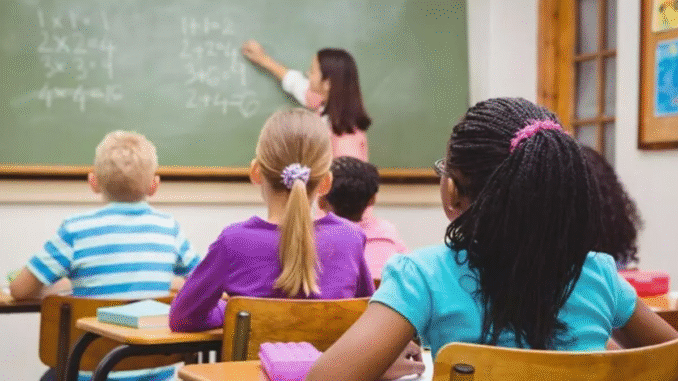
Top 10 Innovative Teaching Methods Changing Classrooms Today
In today’s fast-paced, technology-driven world, education is undergoing a major transformation. Traditional chalk-and-talk methods are giving way to dynamic, engaging, and interactive teaching styles that are reshaping how students learn. Educators are now integrating innovation into their classrooms to better cater to diverse learning needs, foster critical thinking, and prepare students for the future.
In this article, we explore the top 10 innovative teaching methods that are revolutionizing classrooms around the world and improving student engagement and outcomes.
1. Flipped Classroom
The flipped classroom approach reverses the traditional learning model. Instead of introducing new content in class and assigning homework later, students first explore new material at home through videos, readings, or interactive modules. Classroom time is then used for discussions, problem-solving, and hands-on activities.
Why It Works:
- Encourages active learning and collaboration
- Allows students to learn at their own pace
- Maximizes face-to-face interaction for deeper understanding
Example: Teachers may assign a video lecture on a math concept for homework. In class, students work together to solve problems related to that concept, with the teacher guiding and supporting them.
2. Project-Based Learning (PBL)
Project-Based Learning is a student-centered approach where learners gain knowledge and skills by working on extended, real-world projects. These projects often require critical thinking, teamwork, and creativity.
Why It Works:
- Makes learning meaningful and relevant
- Enhances problem-solving abilities
- Encourages self-management and accountability
Example: A history teacher might ask students to create a documentary on a historical event, integrating research, interviews, and multimedia elements.
3. Gamification
Gamification involves applying game-design elements in non-game contexts like classrooms. This method uses points, badges, levels, and leaderboards to increase student motivation and participation.
Why It Works:
- Increases student engagement and motivation
- Creates a fun and competitive learning environment
- Promotes goal-setting and achievement
Example: A language teacher could use apps like Kahoot or Duolingo to create vocabulary quizzes where students earn rewards and track their progress.
4. Blended Learning
Blended learning combines traditional face-to-face teaching with online learning. Students experience a mix of in-person instruction and digital content, often with more control over time, pace, and place of learning.
Why It Works:
- Offers flexibility and personalization
- Provides access to a wealth of digital resources
- Supports different learning styles
Example: In a science class, students might attend a physical lab session and then complete follow-up simulations or quizzes on an online platform like Google Classroom.
5. Experiential Learning
Experiential learning focuses on learning by doing. This method involves real-life experiences such as internships, role-playing, field trips, and simulations that allow students to apply concepts in practical settings.
Why It Works:
- Enhances understanding through direct experience
- Builds real-world skills and confidence
- Encourages reflection and critical thinking
Example: A business class might run a mock startup, giving students hands-on experience in marketing, budgeting, and product development.
6. Inquiry-Based Learning
In this approach, students are encouraged to ask questions, conduct research, and draw conclusions independently. It emphasizes curiosity and exploration rather than passive absorption of information.
Why It Works:
- Promotes independent thinking and problem-solving
- Develops research and analytical skills
- Fosters a deeper understanding of subject matter
Example: In a science unit on ecosystems, students could investigate the impact of pollution on a local river and propose solutions based on their findings.
7. Collaborative Learning
Collaborative learning involves students working together in groups to solve problems, complete tasks, or create projects. This method emphasizes communication, cooperation, and shared responsibility.
Why It Works:
- Enhances social and interpersonal skills
- Builds teamwork and leadership abilities
- Encourages peer learning
Example: Students in a literature class might work in small groups to analyze a novel, each contributing insights and interpretations before presenting their findings.
8. Personalized Learning
Personalized learning tailors instruction to the individual needs, interests, and learning styles of each student. It often involves adaptive technologies and one-on-one mentoring.
Why It Works:
- Supports diverse learning needs
- Improves student confidence and performance
- Encourages ownership of learning
Example: A teacher might use learning software that adjusts the difficulty level of math problems based on a student’s progress, offering additional support where needed.
9. Socratic Method
The Socratic method is based on asking and answering questions to stimulate critical thinking and illuminate ideas. Rather than giving direct answers, teachers guide students to arrive at their own conclusions.
Why It Works:
- Develops critical thinking and reasoning skills
- Encourages deeper analysis and reflection
- Promotes open dialogue and curiosity
Example: In a philosophy class, a teacher might pose a thought-provoking question and encourage students to explore different perspectives through structured discussion.
10. Technology-Enhanced Learning
The integration of advanced technology tools—such as virtual reality (VR), augmented reality (AR), and artificial intelligence (AI)—is expanding the possibilities of classroom instruction.
Why It Works:
- Makes learning interactive and immersive
- Provides access to global content and experiences
- Bridges gaps in traditional education systems
Example: Students can use VR headsets to take a virtual tour of ancient Rome or explore the human body in 3D, bringing abstract concepts to life in an engaging way.
Conclusion
The modern classroom is no longer confined to textbooks and blackboards. With the help of innovative teaching methods, education is becoming more interactive, inclusive, and inspiring. These strategies are not only improving academic outcomes but also preparing students for a future that demands creativity, adaptability, and lifelong learning.
Teachers and schools that embrace these innovations are creating learning environments where every student has the opportunity to thrive. As education continues to evolve, staying informed and open to change is essential for both educators and learners.

